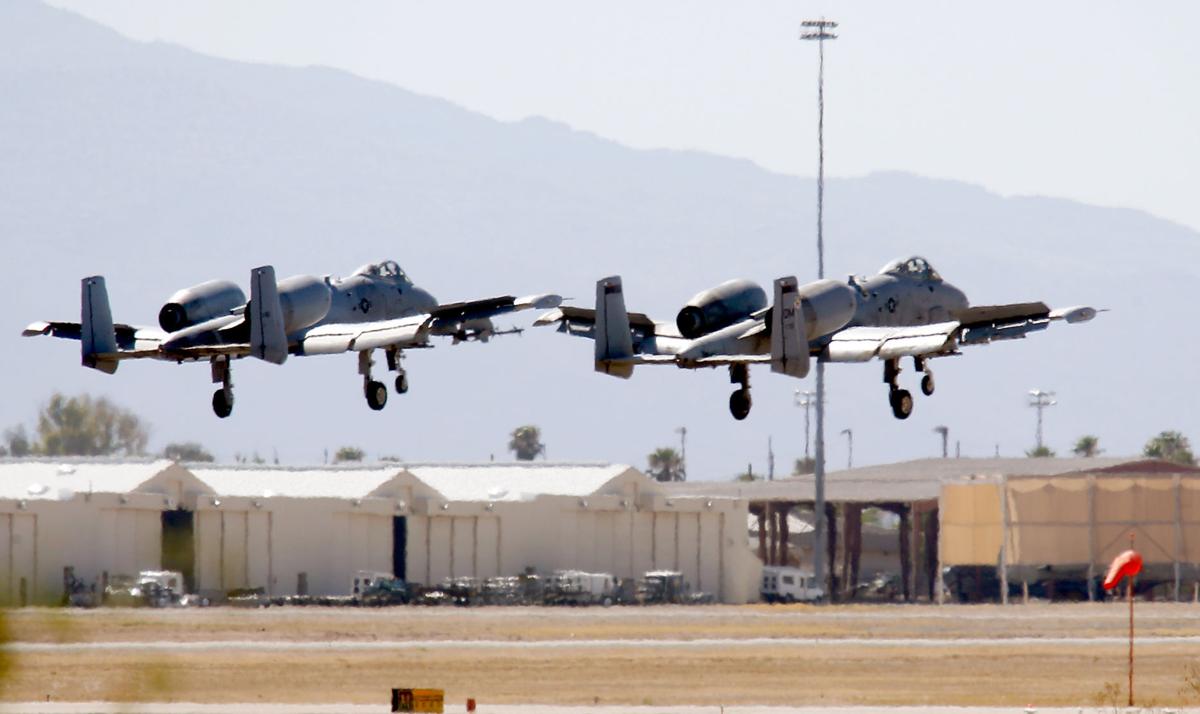A-10 Thunderbolt II ground-attack planes will keep flying through at least 2021, the Air Force’s top general said this week.
The general’s remarks were welcomed by U.S. Rep. Martha McSally, a former A-10 pilot, and U.S. Sen. John McCain, both of whom have worked to keep the planes from being mothballed by the Air Force.
The A-10 “Warthog,” which is known for its toughness and ability to provide close-air support for ground forces, is one of the main missions at Davis-Monthan Air Force Base.
McSally’s comments follow a statement made by Air Force Chief of Staff Gen. David Goldfein at a media breakfast Tuesday in Washington, D.C., that the Air Force will keep all A-10s flying through at least 2021. His statements were reported online by several defense news websites.
Previous commitments by the Air Force would have seen the gradual phasing out of the aircraft starting in 2018, with plans to retire the entire fleet by 2022.
“I welcome Gen. Goldfein’s comments about retaining all our A-10s until at least 2021. Air Force leadership clearly recognize that the previous decision to mothball the A-10 was a mistake and that this aircraft can continue to play a critical role in strengthening our national security,” McSally said in her prepared statement.
McCain also praised the decision, saying it will help protect troops around the globe.
“The Air Force’s announcement that it will not prematurely retire the A-10 is a credit to the brave airmen from Davis-Monthan Air Force Base and military installations across the country who are providing unmatched close-air support in critical missions throughout the world,” he said.
McCain even seemed to suggest the planes should continue flying even beyond 2021.
“As the White House develops a defense budget and new five-year defense plan, I hope it will recognize the need to preserve the A-10 fleet as it continues to make advances in the fight against ISIL and support NATO’s efforts to deter Russian aggression in Eastern Europe,” he said.
McSally has repeatedly asked the military for a comparative “fly-off” between the A-10 and its likely replacement, the F-35, to see which plane is better at providing close-air support of ground forces.
She believes the new timeline will give officials ample time for such a test.
“My provision in last year’s (National Defense Authorization Act) requiring an A-10/F-35 fly-off before any A-10 can be retired aligns with this timeline,” she said. “We need to start a serious discussion about what will preserve the A-10’s crucial capabilities in future close-air support scenarios.”





